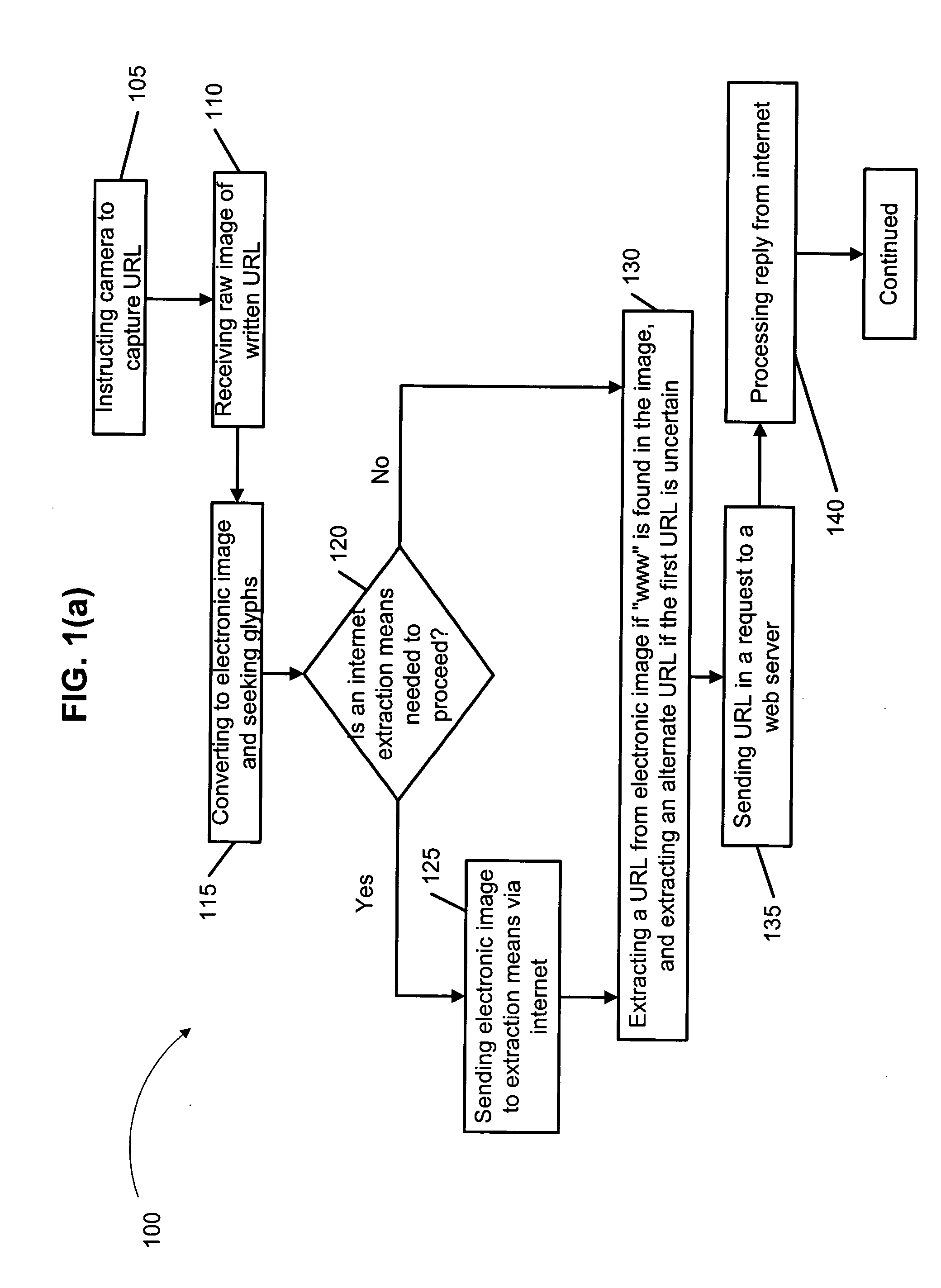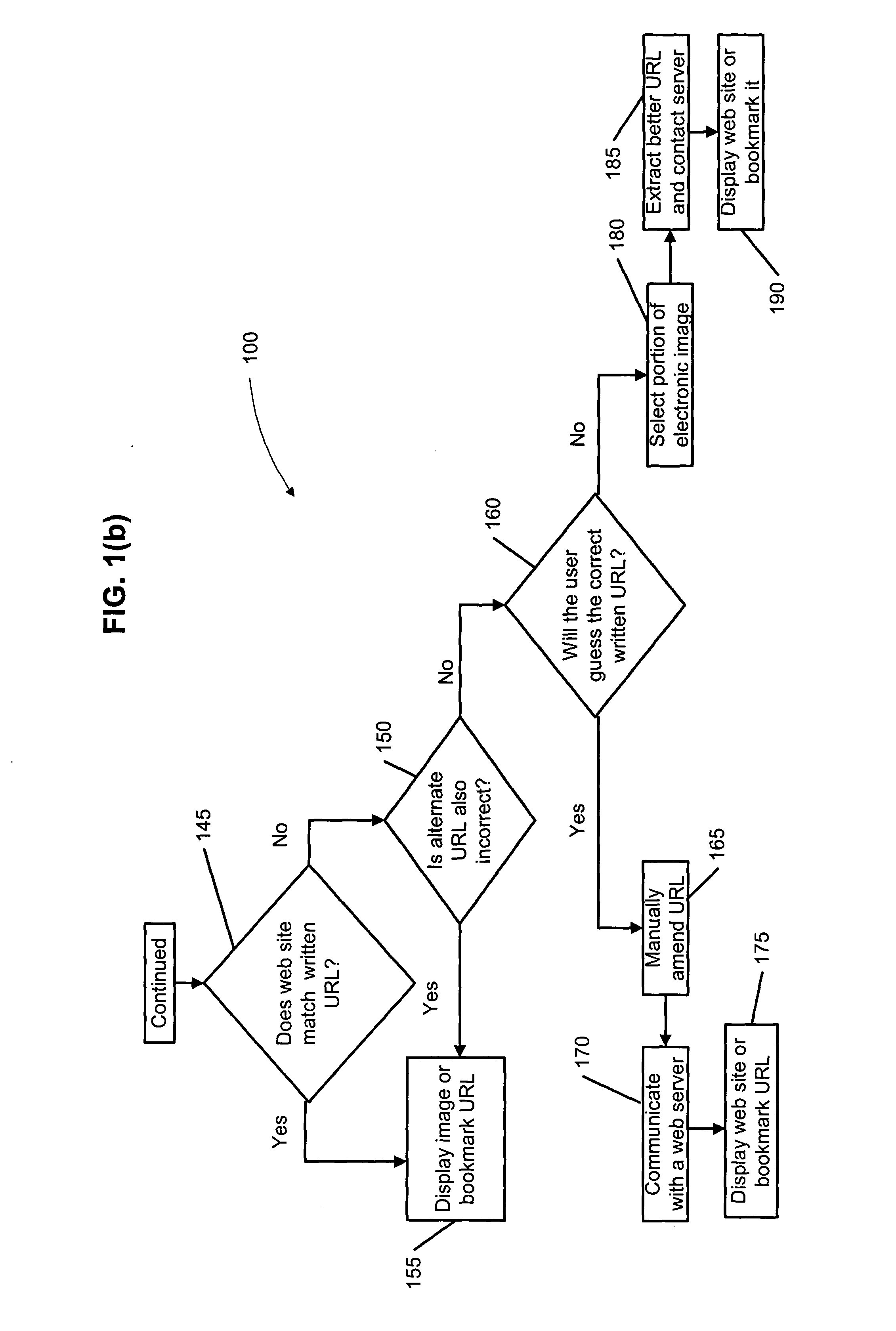Internet access via smartphone camera
a smartphone camera and internet access technology, applied in the field of automatic entry of urls, can solve the problems of prone to typing errors, awkward and distracting to use a keyboard, tedious and time-consuming process, etc., and achieve the effect of easy recognition and no time or troubl
- Summary
- Abstract
- Description
- Claims
- Application Information
AI Technical Summary
Benefits of technology
Problems solved by technology
Method used
Image
Examples
Embodiment Construction
[0031] A smart phone is a telephone with intelligence like that of a personal computer, including a display screen. These mobile devices can include a digital camera, for taking still photographs or filming videos. The camera may be physically connected to the rest of the smart phone, or it may be connected over a short distance from the rest of the phone by a wireless Bluetooth connection. In any event, such a smart phone can be wirelessly connected to the internet, and the present invention enhances this capability. In particular, it makes it easier for a user to access a URL that is seen by the camera, without the user having to type in the URL.
[0032] According to a preferred embodiment of this invention, the camera receives a raw image that is taken substantially instantaneously, as a still photograph, and this single raw image contains the entire URL. Thus, there is no need for a series of photos, nor is there any need to shine anything on the URL such as laser light or infrar...
PUM
 Login to View More
Login to View More Abstract
Description
Claims
Application Information
 Login to View More
Login to View More - R&D
- Intellectual Property
- Life Sciences
- Materials
- Tech Scout
- Unparalleled Data Quality
- Higher Quality Content
- 60% Fewer Hallucinations
Browse by: Latest US Patents, China's latest patents, Technical Efficacy Thesaurus, Application Domain, Technology Topic, Popular Technical Reports.
© 2025 PatSnap. All rights reserved.Legal|Privacy policy|Modern Slavery Act Transparency Statement|Sitemap|About US| Contact US: help@patsnap.com



